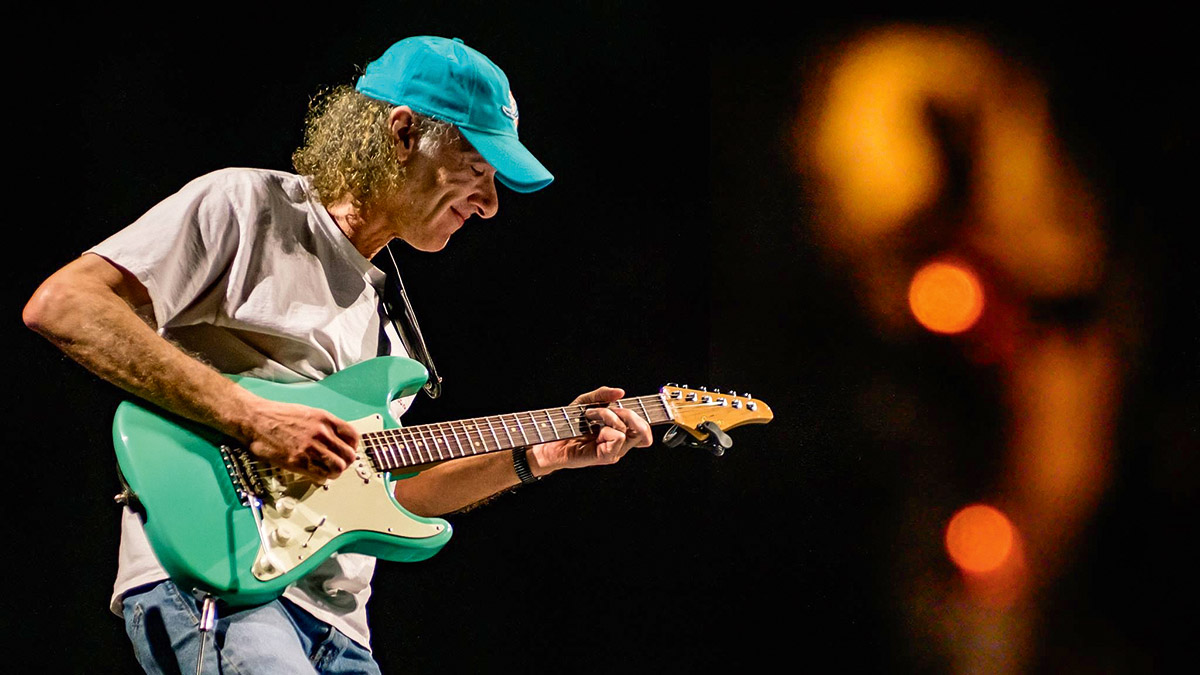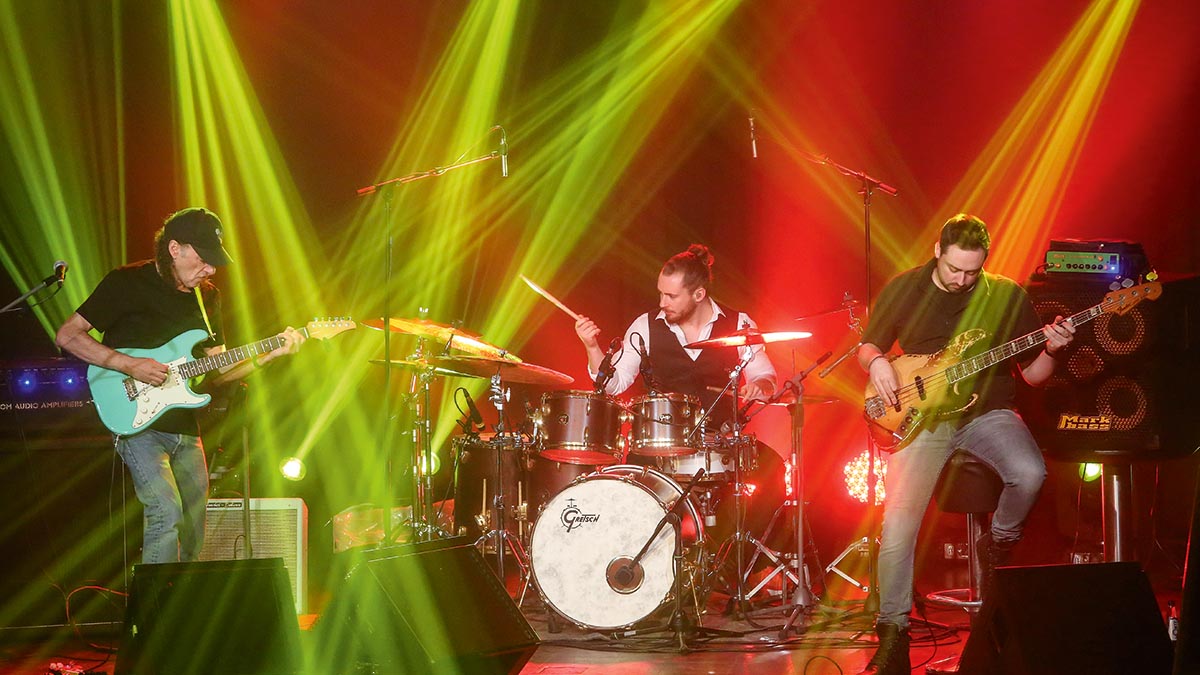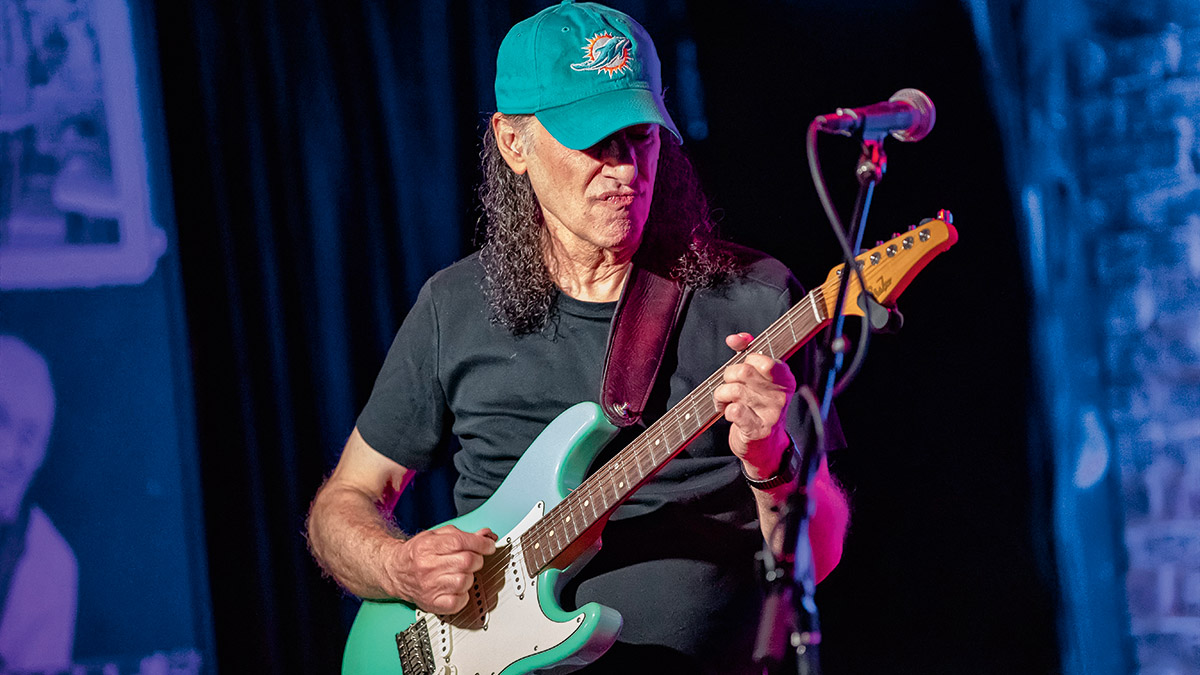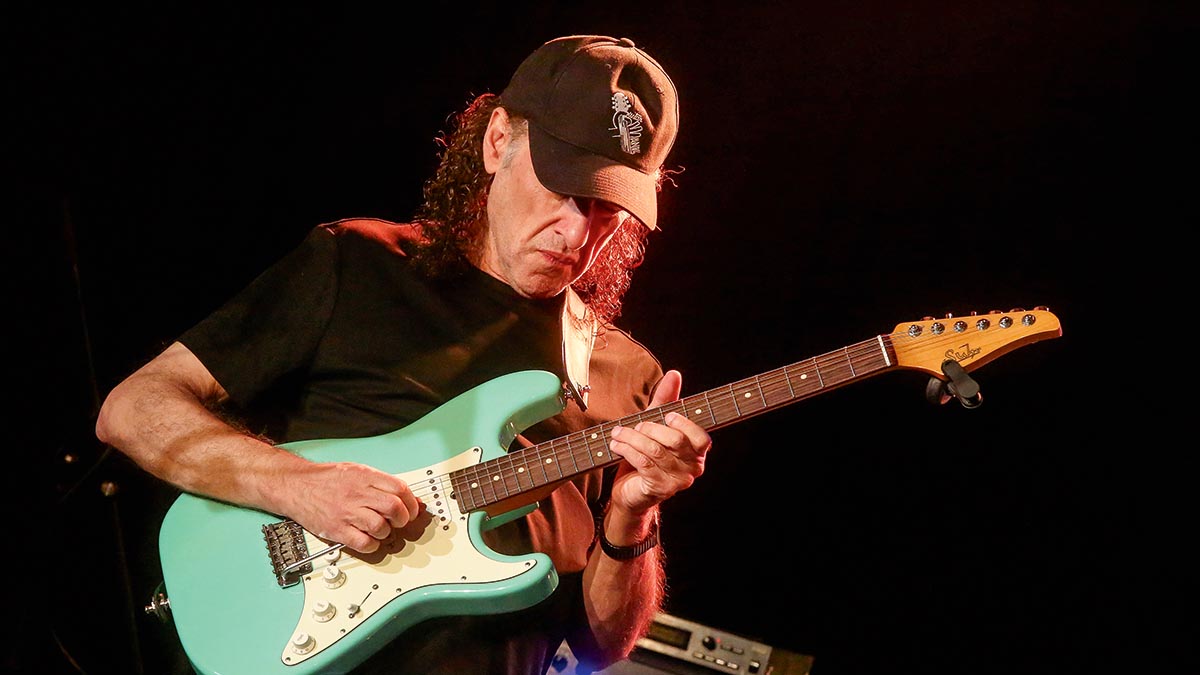“It’s kind of sad that sax or trumpet players can get up there and play like Miles and people appreciate it. But if a guitar player does that, some people think, ‘Oh, that guy has no chops’”: Scott Henderson on virtuosity and musical journeys
Returning with a new instrumental album seamlessly fusing rock, blues and jazz, Scott Henderson checks in to talk gear, style and what we can learn from vocals and horn

Since playing with jazz fusion legends Chick Corea and Joe Zawinul, Scott Henderson has carved out a reputation as one of the most formidable yet melodically eloquent electric guitarists around. He joins us to discuss his new instrumental album.
Tell us about the song that gave the album its name – did it set the tone for the project?
“Well, I don’t name songs before I write them. I just listen to the songs after I write them. And sometimes it takes a long time to figure out titles. But that particular song reminded me of a carnival – there’s this particular moment in that song where there’s like a double snare that sounds kind of like a horse-trot.
“That reminded me of horses and, I don’t know, for some reason that translated into horses in a carnival. I thought the whole song had kind of got some creepy moments but also some fun moments. And that’s what a carnival is: creepy and fun.”
Your style seamlessly blends hard rock with virtuosic jazz influences. What musical experiences first opened up your ears to those possibilities?
“I grew up playing rock, basically rock and blues influenced by Led Zeppelin and Hendrix and Deep Purple and that whole world. So I guess the very first time that happened to me was when I just luckily got a gig with an all-black group, a big 10-piece horn band. I was the only white kid and I was completely clueless about that kind of music because they were playing James Brown, Kool & The Gang, all the Motown stuff, Tower Of Power, Earth, Wind & Fire. I was just completely lost; I had no idea what to do.
“Luckily, one of the horn players was a pretty good rhythm guitar player and he showed me – basically gave me guitar lessons on how to play guitar in that style because they liked my blues playing and they thought it would be cool to have a guitar player that can play solos because they’d never had one before. So I was okay when it came to playing some bluesy solos, but I had no idea how to comp, how to play rhythm.”
Get The Pick Newsletter
All the latest guitar news, interviews, lessons, reviews, deals and more, direct to your inbox!

“But over the next few years that I played with them, I grew to love that music as much as I loved rock. And that changed me as a musician. I thought, ‘Well, gee, so I can have an equal love for rock and R&B and funk.’
“It just totally changed me then – through bands like Earth, Wind & Fire and Tower Of Power, where there were jazzy solos and chords and harmony that I’d never heard before. That got me into bands like Weather Report and other stuff – Mahavishnu Orchestra, Chick Corea – people that were combining rock and jazz.
“At that point, I don’t think I was ready to listen to straight-ahead jazz. But after I listened to fusion for a while, I realised that those guys came from straight-ahead jazz and I started listening to Coltrane, Charlie Parker, Joe Henderson – all the straight-ahead greats. I got really involved in that music for a long time, playing all the standards from the Real Book and Wayne Shorter’s music and stuff like that.
“I’ve just been lucky to get exposed to a lot of different kinds of music. And I’m probably one of the only musicians you’ll talk to that can honestly say I don’t have a favourite kind of music. I love it all, it’s all great.”
In your incredible soloing, you rarely settle squarely on a note – you usually slightly bend or slur the tail of each note in a very vocal way. How did you develop that style?
“I think I probably always did it a little bit. I guess in the last few years I’ve been doing it more… and it’s funny how some people think that I’m using the whammy bar all the time.
“If they heard me play live, they would see that I’m not using it as much as they think because I’m doing a lot of that stuff with my fingers and just sliding around on the fretboard and bending strings and stuff that may sound like the whammy bar but actually isn’t.
“But it does come from listening to vocalists. I mean, that’s all I can say. It comes from listening to slide guitar players, horn players and vocalists because they all do that thing where every note has a little bit of grease on it.”
In jazz guitar the licks are typically melodic, guided by the song’s underlying chord changes. But you find in some instrumental rock that soloing is sometimes treated as an end in itself, with songs a generic canvas to shred over.
“To me, that’s kind of sad, you know, because I think it sort of glorifies virtuosity over musicality. I’m not into it myself. Not that there aren’t some great guitar players… like Eddie Van Halen was a really great guitar player, virtuoso for sure, but also very musical. And not many of the guys who try to play that way… they get the chops, but they don’t often get the soul and that’s what I’m missing sometimes with a lot of the chops guys.
“I don’t hear the blues influence so much and I don’t hear the soulful influence so much. I just hear sort of chops in the service of kind of corny music. That world doesn’t interest me too much.”
When it came to recording the album, did you use your customary Suhr and 100‑watt Marshall amp this time around?
“Yeah, I love Suhr guitars. There’s a Scott Henderson model and that’s the closest thing they make to just a good old vintage Strat. But it’s just easier to play because the neck is a 16-inch radius, so the fingerboard is a bit flatter, big frets so it’s easy to play like a Gibson, but it has the total sound of a vintage Strat. And the cool thing about it is, they have a little dummy pickup in there in the horn. It’s noiseless, so there’s no hum.
“Stevie Ray Vaughan used to do that, but he used to put a real pickup [in there] and when you put a real pickup in your guitar, that’s like 5,000 to 6,000ohms, so it’s going to change the tone. So Stevie had to turn the treble quite a bit up on his amp to make up for what that dummy pickup under his pickguard was doing.
“But with the Suhr thing, it’s a special type of design where instead of 5,000 or 6,000ohms it’s only 200ohms. So you don’t even hear it making any difference in the sound at all. It just takes away the hum.”

How about your pedalboard?
“It’s pretty small because I have to travel with it – it has to fit in a suitcase and I have to carry it with me, so I can’t have one of those giant pedalboards with lots of stuff. But I do use a Boss SE-70, which has a lot of really cool sounds in it.
“I use that into a different amp. I have a wet/dry setup: the Marshall 412 cabinet is dry, and then I carry around a Fender Hot Rod Deluxe that’s just a small 112 combo and that’s where the reverb and delays and all my other effects from the SE-70 are.
“With the combination of the pedals that I use and the sounds that are in the SE-70, which is a pretty cool unit for as old as it is, I can get some pretty cool sounds and textures. Not nearly as much as I can do in the studio, but as much as I can for having to carry around such a small [amount of] gear with me.”

The album has some beautifully intricate playing, but it’s the feel, phrasing and melodicism that really sets it apart. Do you think that the spectacle of flashy playing has dominated guitar too much in recent years?
“Well, I think it’s kind of sad that saxophone players or trumpet players can get up there and play like Miles and people appreciate it. But if a guitar player does that, some people think, ‘Oh, that guy has no chops, and he’s not worth listening to.’
Jeff Beck was immensely popular and well deservedly so because he could take a melody and just do amazing things with it
“It just seems like there’s a whole audience out there that the only thing they want from a guitar is to hear a lot of chops. I mean, people love Wayne Shorter’s playing or Miles Davis’s playing and they didn’t play like guitar players; they played more like singers.
“Jeff Beck was immensely popular and well deservedly so because he could take a melody and just do amazing things with it. But the way he played was ridiculously melodic and creative.
“That’s kind of the school that I would like to belong to because that’s how I think when I play. I’m not thinking about trying to impress anybody with my chops because I don’t have any! [laughs] I’m trying to put the right note in the right place with the best tone I can get. And that’s basically all I know how to do. It’s what I’ve tried to get good at. And that’s where my priority lies.”
- Karnevel! is out now on Mango Prom Music
Jamie Dickson is Editor-in-Chief of Guitarist magazine, Britain's best-selling and longest-running monthly for guitar players. He started his career at the Daily Telegraph in London, where his first assignment was interviewing blue-eyed soul legend Robert Palmer, going on to become a full-time author on music, writing for benchmark references such as 1001 Albums You Must Hear Before You Die and Dorling Kindersley's How To Play Guitar Step By Step. He joined Guitarist in 2011 and since then it has been his privilege to interview everyone from B.B. King to St. Vincent for Guitarist's readers, while sharing insights into scores of historic guitars, from Rory Gallagher's '61 Strat to the first Martin D-28 ever made.
“I liked that they were the underdogs. It was not the mainstream guitar. It was something that was hard to find”: Vox guitars deserve a second look – just ask L.A. Witch’s Sade Sanchez, who’s teaming hers with ugly pedals for nouveau garage rock thrills
“I suppose I felt that I deserved it for the amount of seriousness that I’d put into it. My head was huge!” “Clapton is God” graffiti made him a guitar legend when he was barely 20 – he says he was far from uncomfortable with the adulation at the time










